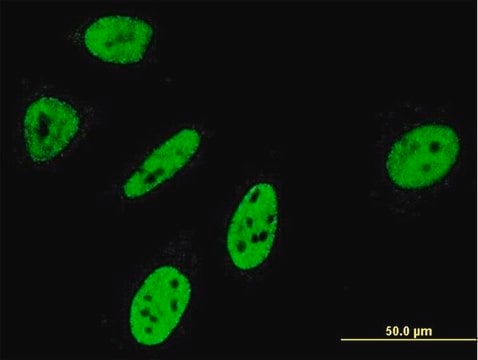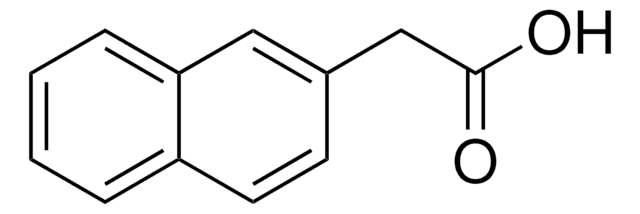All Photos(1)
About This Item
Linear Formula:
Cl2C6H3OCH2CO2H
CAS Number:
Molecular Weight:
221.04
EC Number:
MDL number:
UNSPSC Code:
12352100
PubChem Substance ID:
Recommended Products
Assay
96%
mp
138-140 °C (lit.)
SMILES string
OC(=O)COc1ccc(Cl)c(Cl)c1
InChI
1S/C8H6Cl2O3/c9-6-2-1-5(3-7(6)10)13-4-8(11)12/h1-3H,4H2,(H,11,12)
InChI key
SNYRXHULAWEECU-UHFFFAOYSA-N
General description
3,4-Dichlorophenoxyacetic acid is a phenoxyacetic herbicide.
Application
3,4-Dichlorophenoxyacetic acid was used in the synthesis of layered organic-inorganic nanohybrid material, zinc-aluminum-3,4-dicholorophenoxyacetate.
Signal Word
Warning
Hazard Statements
Precautionary Statements
Hazard Classifications
Eye Irrit. 2 - Skin Irrit. 2 - Skin Sens. 1 - STOT SE 3
Target Organs
Respiratory system
Storage Class Code
11 - Combustible Solids
WGK
WGK 3
Flash Point(F)
Not applicable
Flash Point(C)
Not applicable
Personal Protective Equipment
dust mask type N95 (US), Eyeshields, Gloves
Choose from one of the most recent versions:
Already Own This Product?
Find documentation for the products that you have recently purchased in the Document Library.
Sheikh Ahmad Izaddin Sheikh Mohd Ghazali et al.
Nanoscale research letters, 8(1), 362-362 (2013-08-24)
A new layered organic-inorganic nanohybrid material, zinc-aluminum-3,4-dicholorophenoxyacetate (N3,4-D) in which an agrochemical, 3,4-dichlorophenoxyacetic acid (3,4-D), is intercalated into zinc-aluminum-layered double hydroxide (ZAL), was synthesized by coprecipitation method. A well-ordered nanomaterial was formed with a percentage loading of 53.5% (w/w). Due
D E Lynch et al.
Acta crystallographica. Section C, Crystal structure communications, 56(Pt 12), 1478-1479 (2000-12-19)
The 1:1 organic salt of the title compound, C(7)H(6)ClN(2)O(+). C(8)H(5)Cl(2)O(3)(-) or [(2-ABOX)(3,4-D)], comprises the two constituent molecules associated by an R(2)(2)(8) graph-set interaction through the carboxylate group of 3,4-D across the protonated N/N sites of 2-ABOX [N.O 2.546 (3) and
Ludovic Lardet et al.
Tree physiology, 29(2), 291-298 (2009-02-11)
We compared embryogenic capacities of integument explants excised from three sources of the Hevea brasiliensis (Müll. Arg.) mature genotype PB 260. The three sources were 17-year-old (BT 86) and 7-year-old (BT 96) budded trees and 7-year-old emblings (EM 96). The
Our team of scientists has experience in all areas of research including Life Science, Material Science, Chemical Synthesis, Chromatography, Analytical and many others.
Contact Technical Service







